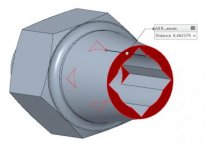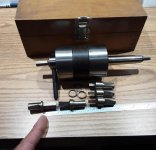I am new to rotary broaching. I just ordered my first wobble broach tool and I would like to know what to expect.
I need to broach a .250" square hole, ideally .75" deep but I'll take all the depth I can get. The tool data sheet says it can reach .505", but also that it requires a 45° lead-in chamfer at diameter .360 minimum.

If I turn this last .042" of material off after initial broaching, is it possible to re-insert the broach with spindle off and continue on to get that .042 back for a final depth of .505?

material = annealed maraging 300
tool = Polygon solutions BT-075-B with S02525B broach
I need to broach a .250" square hole, ideally .75" deep but I'll take all the depth I can get. The tool data sheet says it can reach .505", but also that it requires a 45° lead-in chamfer at diameter .360 minimum.

If I turn this last .042" of material off after initial broaching, is it possible to re-insert the broach with spindle off and continue on to get that .042 back for a final depth of .505?

material = annealed maraging 300
tool = Polygon solutions BT-075-B with S02525B broach


 ) because that way the broach doesn't push a dent out the back as happens if done in the 2nd op.
) because that way the broach doesn't push a dent out the back as happens if done in the 2nd op.
